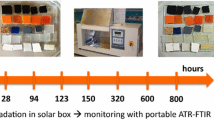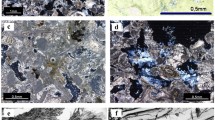Abstract
Historic parchment is an extremely complex material, not only due to the various methods of production used and various past environmental histories of objects, but also due to its inhomogeneous structure. Many traditional methods of characterisation are empirical, but useful since they have gained recognition by the end-users. In this paper, we investigated the shrinkage temperature of collagen and the influence of lipids contained in parchment on the measurements. While the content of lipids does not seem to significantly affect shrinkage temperature measurements themselves, it strongly affects the decrease of shrinkage temperature of collagen during degradation, and thus its thermomechanical properties. This confirms the high importance of lipid peroxidation during degradation of parchment.
While shrinkage temperature determination is a micro-destructive method, we also demonstrated that it is possible to determine this property using near infrared (NIR) spectroscopy based on partial least squares calibration. The root-mean square error of validation (RMSEV), obtained on a set of variously delipidised and degraded samples, was 7°C, so the method could be used for condition assessment or classification of historic objects. Using a set of 185 historic objects dating from 1200–1800, we also developed a method for non-destructive dating of parchment based on NIR spectroscopy using partial least squares regression (RMSEV=72 years), and successfully determined the correct age of a historic charter from the collection of Nationaal Archief, The Netherlands.
Similar content being viewed by others
References
P. Budrugeac, L. Miu, V. Bocu, F.J. Wortman, C. Popescu, J. Therm. Anal. Calorim. 72, 1057 (2003)
P. Budrugeac, L. Miu, C. Popescu, F.J. Wortman, J. Therm. Anal. Calorim. 77, 975 (2004)
C. Popescu, P. Budrugeac, F.J. Wortmann, L. Miu, D.E. Demco, M. Baias, Polym. Degrad. Stab. 93, 976 (2008)
C. Ghioni, J.C. Hiller, C.J. Kennedy, A.E. Aliev, M. Odlyha, M. Boulton, T.J. Wess, J. Lipid Res. 46, 2726 (2005)
A.J. Bailey, R.G. Paul, J. Soc. Leather Technol. Chem. 82, 104 (1998)
C. Chahine, Thermochim. Acta 365, 101 (2000)
M. Strlič, I.K. Cigić, I. Rabin, J. Kolar, B. Pihlar, M. Cassar, Polym. Degrad. Stab. 94(6), 886 (2009)
M. Odlyha, C. Theodorakopoulos, J. de Groot, L. Bozec, M. Horton, Thermoanalytical (macro to nanoscale) techniques and non-invasive spectroscopic analysis for damage assessment of parchment, in Improved Damage Assessment of Parchment, IDAP EC Research report No. 18 (ISBN 978-92-70-05378-8)
S.N. Cohen, M. Odlyha, G.M. Foster, Thermochim. Acta 365, 111 (2000)
R. Larsen, M. Vest, K.J. Nielsen, J. Soc. Leather Technol. Chem. 77, 151 (1993)
L. Puchinger, S. Pentzien, R. Koter, W. Kautek, Springer Proc. Phys. 100, 51 (2004)
R. Larsen, Summery, Discussion and Conclusion. STEP Leather project. Protection and Conservation of European Cultural Heritage. Report No. 1. (1994), p. 151
R. Larsen, Summery, Discussion and Conclusion. STEP Leather project. Protection and Conservation of European Cultural Heritage. Report No. 4. (1994), p. 145
M. Odlyha, C. Theodorakopoulos, J. de Groot, L. Bozec, M. Horton, e-Preserv. Sci. 6, 138 (2009)
P. Budrugeac, E. Badea, G. Della Gatta, L. Miu, A. Comănescu, Thermochim. Acta 500, 51 (2010)
R. Larsen, Microanalysis of Parchment. Archetype Publications, London (2002)
R. Inagi, T. Miyata, Blood Purif. 17, 95 (1999)
T. Miyata, R. Inagi, K. Asahi, Y. Yamada, K. Horie, H. Sakai, K. Uchida, K. Kurokawa, FEBS Lett. 437, 24 (1998)
B. Dolgin, V. Bulatov, I. Schechter, Rev. Anal. Chem. 151, 28 (2009)
G.W. Small, Trends Anal. Chem. 25, 11 (2006)
T. Trafela, M. Strlič, J. Kolar, D.A. Lichtblau, M. Anders, D. Pucko Mencigar, B. Pihlar, Anal. Chem. 79, 6319 (2007)
H.W. Siesler, Y. Ozaki, S. Kawata, H.M. Heise, Near-Infrared Spectroscopy. Principles, Instruments, Applications (Wiley/VCH, Weinheim, 2002)
S.C.C. Wiedemann, W.G. Hansen, M. Snieder, V.A.L. Wortel, Analusis Magazine 26, 4 (1998)
P. Chaminade, A. Baillet, D. Ferrier, Analusis Magazine 26, 4 (1998)
R. Karmer, Chemometric Techniques for Quantitative Analysis (Dekker, New York, 1998)
Author information
Authors and Affiliations
Corresponding author
Rights and permissions
About this article
Cite this article
Možir, A., Strlič, M., Trafela, T. et al. On oxidative degradation of parchment and its non-destructive characterisation and dating. Appl. Phys. A 104, 211–217 (2011). https://doi.org/10.1007/s00339-010-6108-z
Received:
Accepted:
Published:
Issue Date:
DOI: https://doi.org/10.1007/s00339-010-6108-z




